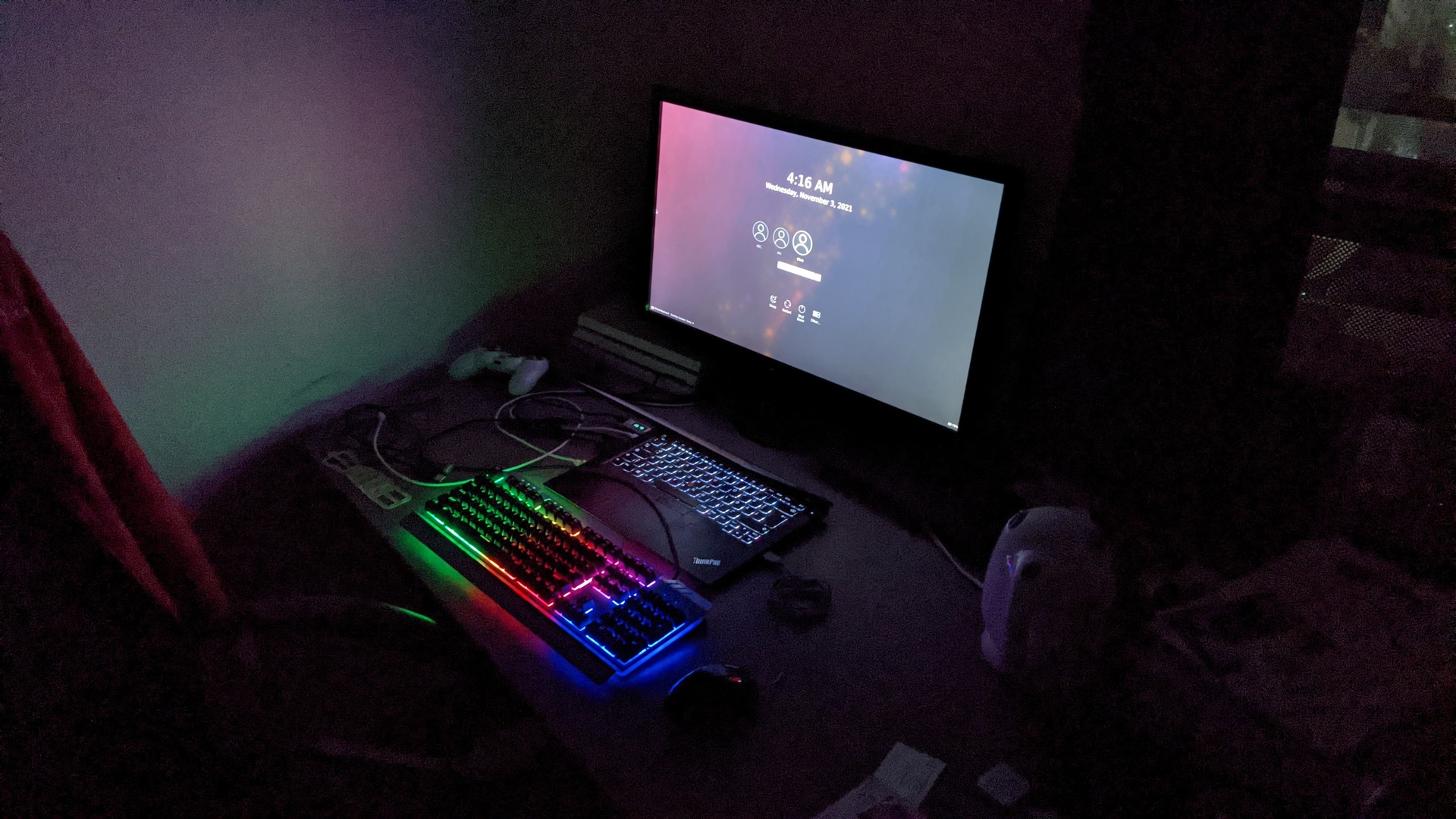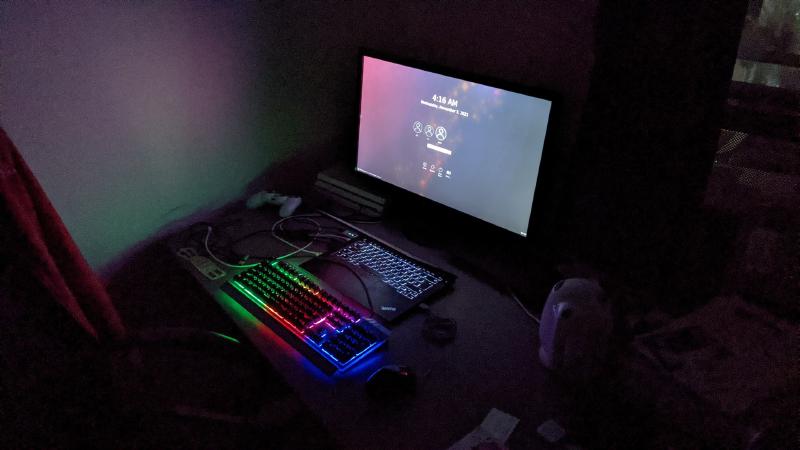What’s here?
The Linux unplugged 437 podcast announces the software pieces which were most important for the listeners this year. After listening to that, I wondered: how changed for me in 2021 regarding software?
Podcasts
I listen to podcasts when going for lunch or hiking in the mountains around Tokyo, and a big share of the podcasts is tech related. The ones which I discovered and started to listen to regularly this year:
- Linux unplugged has weekly Linux news
- I’m into self hosting services, the Selfhosted podcast gives great ideas for new pieces of software to try out
- The Iron Sysadmin podcast is around sysadmin things - and has also quite some American views on what’s going on in the world
- Bilingual news - news on societs and technology - also helps me to improve my Japanese, and has both American and Japanese views
Self host everything!
With that, I refer to the idea of hosting as many services as possible by myself. That is to learn about technology, to be able to directly relate to the topics from the sysadmin world, and because it’s just fun to discover and run new software. Some of these services got extended this year:
- Web: stayed nginx, but the root site is now static and points at the various other software pieces
- The wiki runs on Dokuwiki as before
- The blog stays Hugo based, but now on the Binary theme
- The Japan life observations are based on an a text file and rendered to html with asciidoctor
- Additionally to the existing fgallery based picture albums, I did setup Lychee on pics.fluxcoil.net, hosting the Hokkaido trip images
- Many services stayed: postfix for my email, syncthing for file sync, PerformanceCo-Pilot for performance monitoring, Redis/ Grafana for visualization, Tiny tiny RSS (TTRSS) for collecting feeds and news
I played with Jitsi for hosting video conferences this year, but have taken it down again, not easy to debug in daily operation. As for social media, I’m on twitter, but much more active on the decentralized Mastodon. For now, just using a Mastodon account on a different instance, but one can also host that by oneself.
A huge change regarding my hosting of this year: I started to use containers. This came in with Lychee: it’s a beast with many PHP modules which I wanted to some degree separated, and easy to roll back. For now it’s in a Debian container. The newest Lychee version has jumped to PHP 8, which almost no distro has as of now. Also TTRSS runs now in containers, Alpine based.
Mobile phone
My main phone stays the Pixel 4a. I’m happy with the hardware, and tried to ungoogle it this year with custom images: after much fiddling I’m now back on the Google image: pictures taken on the custom images had an unbarably bad quality.
My company SIM runs in the Huawei P20 lite: after disabling 4G, it has an amazing battery lifetime. I attempted to use a custom image, but a code is needed to unlock the bootloader - shame on you Huawei, I won’t buy from you again.
Contributing code
At work, I use a wide spectrum of skills: communication with partners, customers and colleagues, debugging, documenting, writing articles, giving technical presentations and more. Speaking at PCP.Conf 2019, I mentioned the idea of a software piece for Linux to collect metrics about electrical energy consumption. Kind of powertop, but recording the most important pieces. I gave this a try this year, the code is now in upstream as pmda-denki, and will be in RHEL8.6. Denki/電気 is Japanese for ’electricity’, I’m proud the project was ok with that name. Details on using pmda-denki and findings are here and here.
Desktop
End of last year I switched to KDE Plasma, after many years on WindowMaker. It’s nice.. but it felt a bit heavy, and finally when failing to properly configure an external keyboard, I made the switch to the Sway window manager. Sway is Wayland only, which came with own challenges, but at the moment I’m quite happy with it - details are here.

Sway is a tiling window manager. On WindowMaker and Plasma, after start of the window manager, I always started terminals on some virtual screens, arranged them to a size which seemed fitting, and so on. Now, I just start terminals and by default Sway decides on the size - actually quite convenient. I have used gkrellm to display monitor network traffic, system load and so on for many years - no longer using that, but now the most important status details are in the Sway status bar on the top of the screen. I feared I would no longer have a nice overview of the system, but it turned out this is actually all I need. :)

Along with the switch to Sway, I switched to fcitx5 as input switcher, and Mozc as Japanese input engine - working really nicely! I experimented with some terminals, but stayed with xterm: works nicely also for Japanese input, and supports the fonts I need. I use mail client (mutt) and IRC client (irssi) from the commandline, also these did not change this year. Also on the desktop: qiv (image viewer), Libreoffice, Inkscape, Gimp.
Also desktop: for video watching I use mplayer since many years: reasonable performance, I’m comfortable with the keyboard controls. VideoLanClient (vlc) is also installed, but rarely used. Now this year, I have hit a 4k video, which the player needs to scale down to 1920x1080 for my screen - I did not get this done with reasonable frame rates on mplayer, so will use more vlc from now on.
Smaller devices
Rockbox: This year, I discovered the Fiio M3K mp3 player running rockbox as a nice platform to code, where one has to be aware of technical limitations. My goal was to port ‘bad apple’, details are here. Rockbox is really recommended, a nice project and a great community!
Raspi4: I was curious how well USB HDMI grabbers work, got one and played with it. Quite usable, actually!
Nintendo Switch: I tried out the new Ubuntu@Switch version from the switchroot project, Linux support got really far on the Switch. Nintendo also released the new hardware revisions which no longer have the hardware glitch which allows to run Linux. The last Fedora release which I brought to the Switch was 32, the Switchroot project now provides newer builds of Fedora and other distros. Cheers azkali and gavin!
Games
I read the RSS feed from GamingOnLinux, and keep a short list of games around which I am interested in. There was much movement this year, especially the SteamDeck might be big next year. Last year, I also purchased a small hand held console, looks a bit like a playstation portable, which runs Linux and all kinds of SNES/Amiga and so on emulators. I’m not using it at all.. if you are in Tokyo and think it can be of use to you, let me know.
I spent most of my gaming hours this year in Black Mesa, a Half life clone, and ParticleFleet.
Upcoming
Looking forward to some things:
- I ordered the System76 launch keyboard, which can nicely be updated with fwupd, looking forward to using it.
- Would like to play a bit with the new Apple aarch64 based hardware - but it’s to expensive just for playing with it a bit, and Thinkpads are my daily drivers currently.
- Curious what the Linux based SteamDeck (hand held gaming machine from Valve) will be like. Also the Pine note, an e-ink device meant for Linux looks quite nice.
There is my list of project ideas, and while pmda-denki and ‘getting bad apple onto rockbox’ came off the list, the list got extended with fresh ideas. Let’s make it a good year 2022 for OpenSource! :)
